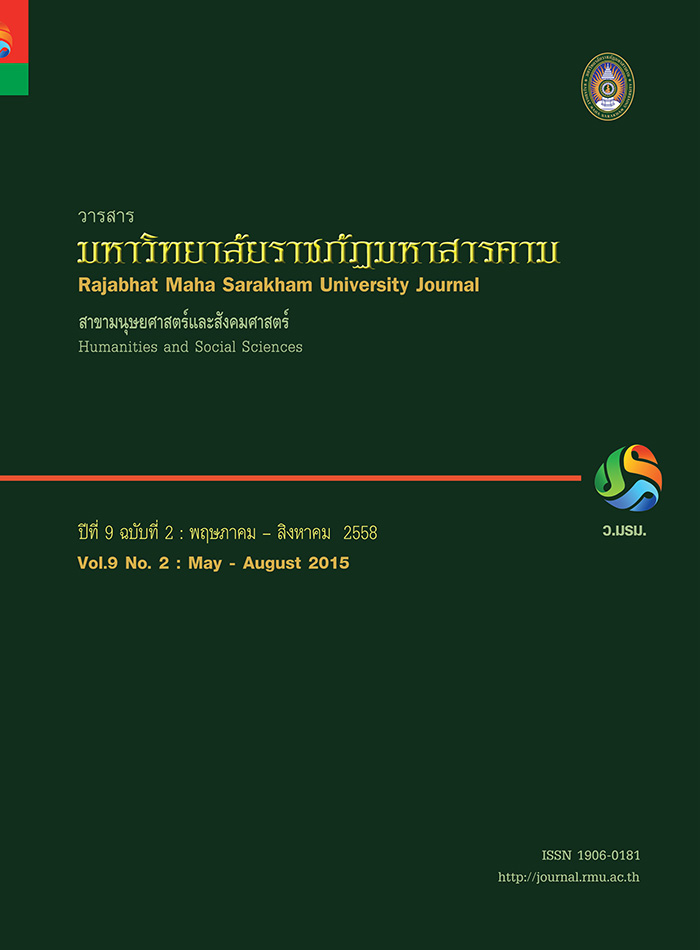พระมหาอุปราชกับปัญหาการสืบราชสันตติวงศ์ในพระราชสำนักสยาม ;The Great Viceroy and the problem of determining succession in the Royal Court of Siam
Main Article Content
บทคัดย่อ
การสืบราชสันตติวงศ์ในพระราชสำนักสยาม ตั้งแต่สมัยสุโขทัยกระทั่งสมัยรัตนโกสินทร์ เป็นประเด็นปัญหาสำคัญ
ทางประวัติศาสตร์ประการหนึ่ง ทั้งนี้เพราะไม่มีธรรมเนียมเป็นระเบียบที่แน่นอน การสืบราชสมบัติจึงใช้การอ้างสิทธิในความสัมพันธ์
ทางเครือญาติ ความสัมพันธ์นี้เกิดขึ้นโดยการแต่งงานข้ามเชื้อข้ามวงศ์ก่อให้เกิดความสัมพันธ์ระบบเครือญาติทางการเมือง เมื่อมี
การกำหนดชัดเจนให้บุคคลดำรงตำแหน่งพระมหาอุปราชหรือองค์รัชทายาท จึงเป็นประโยชน์อย่างยิ่งแก่การบริหารราชการแผ่นดิน
ทว่าตำแหน่งนี้ก็ส่งผลกระทบต่อพระมหากษัตริย์อย่างมากเกี่ยวกับความหวาดระแวงเรื่องการแย่งชิงราชสมบัติ เหตุการณ์แย่งชิง
ราชสมบัติมักเกิดขึ้นกับองค์รัชทายาทผู้ทรงเป็นพระญาติต่างเชื้อวงศ์ หรือเป็นพระเจ้าน้องยาเธอ แต่มักไม่เกิดขึ้นกับรัชทายาทซึ่ง
ทรงเป็นสมเด็จหน่อพระพุทธเจ้าหรือพระราชโอรสหรือรัชทายาทโดยตรง
Determining succession in the Royal Court of Siam was an issue of great importance during the Sukhotai
to Ratana-kosin period. At the time, the customs for determining succession had not been fully formed.
Claims to the throne were spread out between different marriages of royal bloodlines, leading to political
factions among different family members regarding the validity of claims. When customs establishing clear
guidelines to determine a Great Viceroy to succeed the King were developed, administration of the Kingdom
was greatly improved. However, the Great Viceroy position brought worry to the Kings in that the Great Viceroy
might try to usurp the throne. Usually, if the Great Viceroy was a cousin or other distant relative, then the
threat of the throne being usurped was quite high. If, however, the Great Viceroy was the Crown Prince, then
smooth succession was more likely.
Article Details
1. บทความที่ลงตีพิมพ์ทุกเรื่องได้รับการตรวจทางวิชาการโดยผู้ประเมินอิสระ ผู้ทรงคุณวุฒิ (Peer Review) สาขาที่เกี่ยวข้อง อย่างน้อย 3 ท่าน ในรูปแบบ Double blind review
2. ข้อคิดเห็นใด ๆ ของบทความที่ลงตีพิมพ์ในวารสารมหาวิทยาลัยราชภัฏมหาสารคาม นี้เป็นของผู้เขียน คณะผู้จัดทำวารสารไม่จำเป็นต้องเห็นด้วย
3. กองบรรณาธิการวารสารมหาวิทยาลัยราชภัฏมหาสารคาม ไม่สงวนสิทธิ์การคัดลอกแต่ให้อ้างอิงแสดงที่มา


